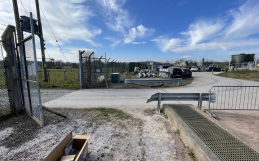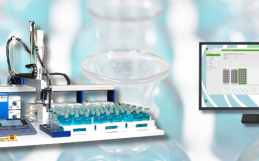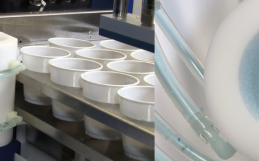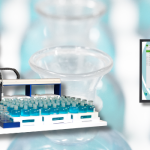The New York Aquarium is using their MANTECH MT100 analyzer to monitor the health of rehabilitated live stony corals. After being illegally imported into the US, these corals were confiscated by the US Fish and Wildlife Service and brought to the New York Aquarium in Coney Island.
Corals are marine animals composed of polyps which live in colonies. These polyps form hard calcium carbonate exoskeletons, forming coral reefs. These reefs provide habitats for at least 25% of the world’s marine life, protect coastlines from erosion and flooding, and provide space for fish nurseries. Acidification from CO2 and temperature changes across the world are affecting the health of the world’s remaining coral reefs.
“This is delicate, hands-on work,” said aquarist Camilla Piechocki. “We monitor water chemistry, slowly reintroduce lighting, and mimic reef conditions to help them thrive. These animals are resilient, but the transition from illegal shipment to thriving exhibit is a complex process.”
After time and care, the corals will ultimately become part of the Aquarium’s public reef exhibits.
The New York Aquarium, run by the Wildlife Conservation Society, is no stranger to sea life care and rehabilitation. The Aquarium hosts plenty of marine life, including sharks, rays, sea lions, sea otters, harbor seals, invertebrates, penguins, and more.
The coral propagation techniques the Aquarium use involve monitoring the quality of the water: Hardness, pH, Alkalinity, and Salinity. That’s where the MANTECH MT100 analyzer comes in.
The Aquarium’s MANTECH MT100 analyzer is configured to perform Potentiometric Hardness, pH, Alkalinity, and water temperature for temperature dependent calculations. These parameters can all be analyzed from one aliquot of sample or analyzed individually/in combination as needed.
We spoke to Mark Kessel, Water Quality Manager at the Aquarium, to learn more about the water chemistry critical to coral health. We’ve attached a table displaying the ideal values that help support coral health (see Table 1).

Table 1
Ideal Water Chemistries for Corals (Delbeek & Sprung 2005)
| Measurement Type | Ideal Values | ||
|---|---|---|---|
| Calcium Ions (mg/L) | 400 | ||
| Magnesium Ions (mg/L) | 1300 | ||
| PH (pH units) | 8.1 – 8.5 | ||
| Alkalinity (mg/L) | 125 – 175 | ||
| Salinity (ppt) | 30 – 35 |
Calcium & Total Hardness
Calcium is important to sensitive aquatic invertebrates such as live corals. It’s used to build their hard skeletons and support their soft tissues. As we’ve learned from Kessel at the Aquarium: “Corals will assimilate the dissolved calcium in the water as aragonite (a crystalline form of calcium carbonate) to form their skeletons and polyps.”
Magnesium, the second most abundant cation found in seawater, also plays a crucial role by helping to maintain the water’s ionic balance and supporting coral health, growth, and metabolism. Calcium and magnesium must be regularly replenished in the water, as corals will remove these mineral salts over time.
pH
The skeletons of corals rely on calcium carbonate for the deposition of the mineral. For this to happen, the pH of that seawater is critical. Kessel tells us that “pH is also crucial to the internal and external transfer of ions in aquatic invertebrates, and in supporting the health of corals that house zooxanthellae (a photosynthetic dinoflagellate found in most corals) as part of a symbiotic relationship that provides corals with nutrients.”
Alkalinity
Alkalinity is another parameter critical to coral health, as the correct alkalinity helps in stabilizing pH. Balanced alkalinity also stabilizes inorganic carbonates such as carbon dioxide, calcium carbonate and sodium bicarbonate. Kessel shares that “All of these dissolved chemicals provide a complex network of ionic activity that directly relates to the physiology and health of most aquatic animals and supports a balanced pH.”
Salinity
Salinity is a measure of the concentration of dissolved salts in water, typically measured in parts per thousand. It is an important component of the coral’s environment, as corals are sensitive to changes in salinity. Changes could lead to stress, bleaching (loss of pigmentation due to the death of its symbiotic zooxanthellae), or even coral death. Kessel tells us that “varying concentrations of trace elements and mineral salts play a big role in producing the diversity and radiance of the living coral reefs most of us have come to revere in our oceans (and aquariums!).”
You can read more about MANTECH’s testing methods below.
But first, plan your next visit to the New York Aquarium!
MANTECH’s Application Abstracts:
- Hardness: Calcium, Magnesium and Total Hardness – MANTECH
- pH: pH – MANTECH
- Alkalinity: Alkalinity by Titration – MANTECH
- Salinity: Salinity – MANTECH
- View all MANTECH’s Application Abstracts
Additional Reading:
- Article: WCSNewsroom US Fish and Wildlife Service Seized Corals Are Being Rehabilitated in the New York Aqua…
- Article: ABC 7 New York Confiscated corals from JFK Airport get new life at New York Aquarium
Sources:
- Delbeek, J.C, Sprung, J. 2005. The Reef Aquarium, Science, Art, and Technology (Volume Three). Two Little Fishes, Inc.
- Brightwell, CR. 2007. Marine Chemistry, A Complete Guide to Water Chemistry in Marine Aquariums. T.F.H Publishing.
- Gattusso, J.P., Frankignoulle, M., Bourge, I., Romaine, S., Buddemeier, R.W. 1998. Effect of Calcium Carbonate Saturation of Seawater on Coral Calcification. Global and Planetary Change, Vol. 18, Issues 1-2, Pg. 37-46.







